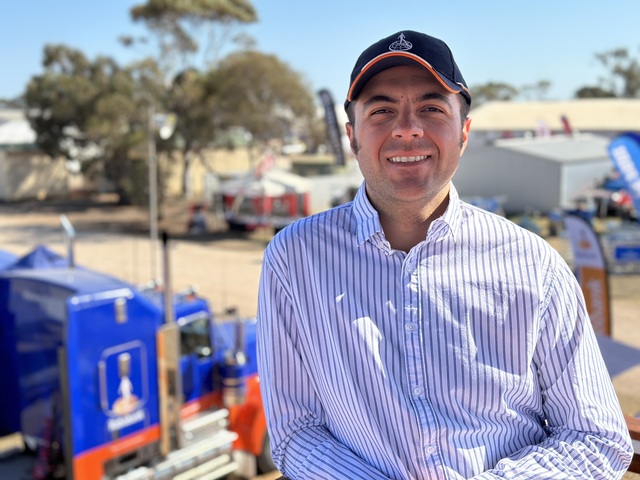Australia’s grain growers are looking to improved prospects in the season ahead, with 2024/25 gross margins set to increase on the back of a lower cost of production, Rabobank says in newly-released research report.
The specialist agribusiness bank says with the cost of fertiliser and agrochemicals potentially down as much as 20 per cent while grain prices are forecast to ease just 6 per cent on average, the upcoming Australian winter crop is shaping up to have a much better outlook than the previous season, where gross profit margins had been squeezed.
The report, Australia’s winter crop gross margins – which analyses winter crop performance from 2017/2018 – forecasts 2024/25 average gross margins for the three major Australian winter crops (wheat, barley and canola) to all come in above the relatively low levels seen last season, albeit still lagging seven-year averages.
The report forecasts average Australian wheat gross margins for 2024/25 to come in at around 34 per cent (compared with approximately 20 per cent last season), barley at 33 per cent (compared with 25 per cent in 2023/24) and canola at 26 per cent (up from 15 per cent in 2023/24). This compares with averages for the period of 43 per cent, 41 per cent and 45 per cent respectively, according to the bank’s modelling.
Report author, RaboResearch grain and oilseeds analyst Vitor Pistoia said “gross margins can also be understood as a business’s capacity to generate cash and, in that sense, 2024/25 should see a rebuild close to historical levels”, with the previous (2023/24) season having been impacted by “substantial grain and oilseed price reductions and still relatively-elevated farm input prices”.
“The seeding period for the 2024/25 season is about to start and growers are making the final decisions on what to plant and how to optimise crop rotation. The commodity price forecast as well as the expected cost of farm inputs are considerably different from the previous seasons, which has altered the profitability scenario for the upcoming winter cropping season,” he said.
But “as with all things farming”, the improved outlook “remains weather dependent”, Mr Pistoia said.
Wheat ‘the breadwinner’
The report says wheat is set to be Australia’s “bread winner” for the season, with the 2024/25 crop likely to see “more dollars per hectare”, with a projected gross margin of A$281/hectare (compared with an average A$158/hectare in 2023/24).
Despite wheat prices forecast to be down 8 per cent year-over-year, this is set to be “greatly compensated” by a predicted larger reduction in the variable costs of fertiliser and agro chemicals (forecast to be down approximately 20 per cent for wheat growers), the Rabobank report says.
“The A$281 per hectare gross margin forecast situates wheat as potentially the most profitable of the three major crops for 2024, together with barley,” Mr Pistoia said.
“Also due to the lowest variable cost, wheat might expand its area over other crops, especially canola.
These dynamics – and the fact wheat is the cheapest to produce of the three big Australian winter crops – will likely see the hectares planted to wheat in the coming season remain above the 12-million-hectare mark.
“In the 2023/24 season, wheat was cropped on 12.5 million hectares or 55 per cent of the winter crop area,” Mr Pistoia said. “Its total revenue was only exceeded by beef, and Australia is the fifth largest exporter of wheat globally.”
He said wheat had been the only crop to have achieved above-average gross margins in four of the past seven seasons.
Barley ‘the workhorse’
The bank estimates 2024/25 malting barley margins to come in at around A$282/hectare (up from an average A$225/hectare in 2023/24), providing similar margin returns to wheat, and well above canola.
“In combination with the benefits of barley at paddock level, such as weed control and optimising field work schedules, this sees barley as a strong and reliable crop choice for Australian farmers,” Mr Pistoia said.
The bank expects 2024/25 Australian planted barley area to remain greater than four million hectares.
Mr Pistoia said China’s import tariff on barley – announced in 2020 and scrapped in August last year – had impacted grower margins substantially, with barley recording the smallest margin growth of all three big winter crops between 2019/2020 and 2022/2023.
“Australian farmers’ response came in the form of area reduction – in this period, area planted to barley was reduced by roughly 1.3 million hectares or a 25 per cent reduction,” Mr Pistoia said.
“Unexpected support for barley growers had come from reduced global wheat and corn ending stocks at the time, which prompted the demand for barley as a feed alternative in the period and avoided further price reductions.”
Canola ‘the rollercoaster’
The bank forecasts average Australian gross margins for canola at around A$251/hectare in 2024/25 – well up from last season’s average A$158/hectare gross margin, but lagging wheat and barley.
While production costs will be lower, “the global market for oilseeds is not promising a massive commodity price upside for the 2024/25 season”, the report says.
With canola having the highest correlation between margin outlook and cropping area of all the big three Australian winter crops, a reduction in area planted is expected in the season ahead, Rabobank says.
An area of around three million hectares is expected for the 2024/25 season, Mr Pistoia said, with the east coast showing a higher share of “canola area” due to already good levels of soil moisture through the recent summer.








